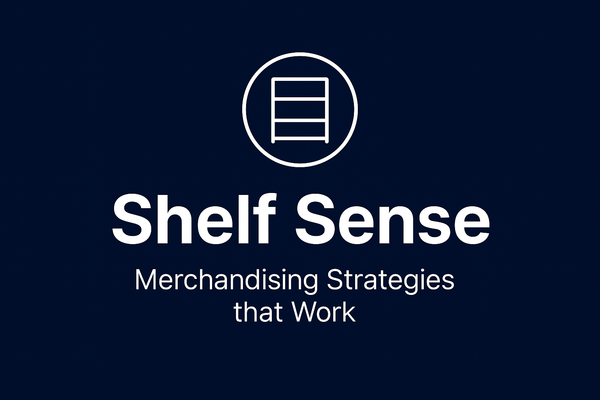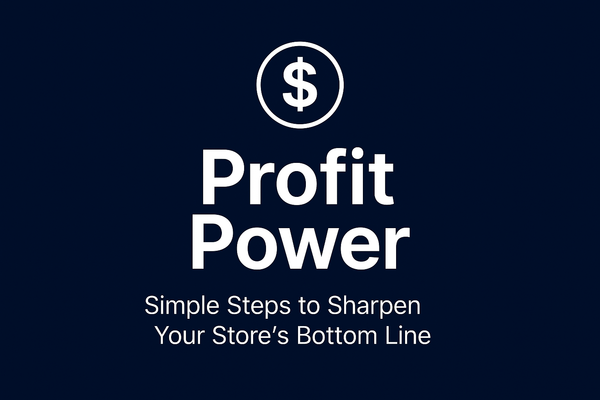Understanding Retail Accounting: Essential Inventory and C-Store Business Basics
Look, I've been in your shoes. Trying to make sense of all those numbers, spreadsheets, and reports while customers are lined up, the coffee pot's empty, and someone just spilled a Slurpee in aisle three. Trust me, I get it!

Look, I've been in your shoes. Trying to make sense of all those numbers, spreadsheets, and reports while customers are lined up, the coffee pot's empty, and someone just spilled a Slurpee in aisle three. Trust me, I get it! Retail accounting in convenience stores can feel like trying to solve a puzzle with half the pieces missing. But here's the thing – once you wrap your head around some basics, you'll be surprised how much clearer the whole business picture becomes.
The Money Maze: What's Really Going On -
When I first started managing my store, I'd look at the daily reports and think, "What the heck am I even looking at?" The numbers seemed to be written in some secret language. But honestly, it all comes down to a pretty simple equation: money in versus money out.
Money comes in through sales (duh!), but tracking those sales correctly makes all the difference. We're not just talking about the cash in the register. We've got credit card payments, mobile payments, EBT transactions, lottery sales, gas purchases – the list goes on and on! Each one needs to be accounted for separately because they all affect your bottom line differently.
The money going out? Well, that's your cost of goods sold (inventory you've purchased to resell), operating expenses (rent, utilities, payroll), and all those sneaky little costs that add up faster than customers grabbing candy bars during a sugar craving.
Inventory: The Hidden Beast -
Holy cow, inventory management is where I nearly lost my mind when starting out! Having too much inventory ties up cash, you could use elsewhere. Having too little means empty shelves and disappointed customers. It's a balancing act, and I'm still working on my tightrope skills!
Here's what I wish someone had told me from day one: keeping track of what's coming in and going out is absolutely crucial. Yeah, I know, Captain Obvious to the rescue! But seriously, you'd be surprised how many store managers just wing it.
I use a perpetual inventory system now. Basically, it updates in real-time as products are sold. When someone buys a pack of cigarettes, the system automatically deducts it from my inventory count. Magic? Nope, just good software doing its job!
But – and this is a big but – you still need to do physical counts regularly. Trust but verify, as they say. Shrinkage is the fancy term for all that inventory that walks out without being paid for (theft), gets damaged, expires, or mysteriously vanishes into thin air. Without regular counts, you'll never know your true shrinkage rate.
Margins Matter More Than You Think -
I used to think volume was everything. "Sell more stuff, make more money," right? Wrong! I quickly learned that margin – the difference between what you pay for something and what you sell it for – is where the real game is played.
Let me give you an example. Those energy drinks flying off the shelves might seem like bestsellers, but if you're only making a 15% margin on them while your coffee has a 70% margin, guess which one is actually bringing home the bacon? Yeah, I'd rather sell half as many coffees as energy drinks any day of the week!
Different categories have different typical margins. Your tobacco products might run on razor-thin margins (thanks, big tobacco companies!), while your prepared food could be pushing 60% or higher. Knowing these differences helps you decide where to focus your efforts and how to arrange your store to highlight the real money-makers.
Cash Flow: The Lifeblood of Your Store -
Man, did I learn this lesson the hard way! You can be profitable on paper but still go out of business if your cash flow stinks. Crazy, right?
Here's the deal – timing matters. You might have to pay your vendors within 15 days, but customers are paying you immediately. Sounds great, except when you're stocking up for a big holiday or promotion. Suddenly, you're shelling out thousands before seeing that money come back in.
I started keeping a simple cash flow forecast – just mapping out when money would come in and when bills would be due. This saved my bacon more than once when I could see a crunch coming and plan accordingly. Sometimes, that meant negotiating with vendors for extended terms or timing a promotion to generate cash when I knew I'd need it.
Daily Reconciliation: The Habit That Saved My Store -
Look, I know it's a pain in the neck. The last thing you want to do at the end of a long shift is more paperwork. But daily reconciliation – making sure your sales records match what's actually in your register – is non-negotiable.
I make this the first thing I do every morning. I check yesterday's closing numbers before diving into the new day. This habit has caught so many issues early: a cashier who needed more training on the POS system, a credit card batch that didn't process properly, even a weird glitch that was doubling up certain lottery transactions.
Small discrepancies can point to bigger problems. A register that's off by $5 might not seem like a big deal, but if it's happening every day, that's $1,825 walking out the door each year!
Technology Is Your Friend (Usually) -
I was the guy who resisted new tech for years. "If the old cash register works, why change it?" Boy, was I wrong! The right point-of-sale system integrated with your inventory management can save hours of manual work and provide insights you'd never get otherwise.
But – and I cannot stress this enough – back up your data and learn how the system works! I've seen too many store owners completely lost when their system goes down or shows something unexpected. Technology is awesome until it isn't, and then you better know how to figure things out the old-fashioned way.
The Bottom Line (See What I Did There?) -
At the end of the day, understanding your store's finances isn't about becoming an accountant. It's about knowing what makes your business tick so you can make better decisions. Which products deserve prime shelf space? When should you run promotions? Is that new beverage line worth carrying? Without a handle on your numbers, you're just guessing.
I still have days when I look at a spreadsheet and wonder if it's written in ancient Greek. But I've learned to focus on what matters: inventory turnover, margins by department, cash flow, and daily reconciliation. Get those right, and the rest tends to fall into place.
So, are you running your convenience store, or is it running you? The difference might just be a few spreadsheets and some regular counting away!





